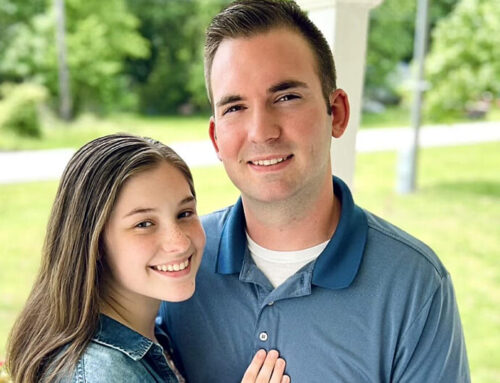BY AMANDA COLETTA
May 16, 2021
-Washington Post
Dozens afflicted by devastating disease that has already left 6 dead
Alier Marrero is stumped. For years, the neurologist in Moncton, New Brunswick, has seen patients with symptoms common to Creutzfeldt-Jakob disease, a fatal brain disorder that affects 1 in 1 million people each year.
But diagnostic testing for the rare neurodegenerative syndrome keeps coming back negative, more patients with similar symptoms have turned up each year, and Marrero hasn’t found another cause. Federal public health officials last year identified the cases as a cluster meriting further investigation.
Now Marrero and scientists and doctors from Canada and around the world are playing detective in a medical whodunit, racing to untangle the cause of the brain disorder that has afflicted 48 people, six of whom have died, in the Moncton area and New Brunswick’s Acadian peninsula.
Those afflicted with the condition — called the New Brunswick Cluster of Neurological Syndrome of Unknown Cause, for now — have ranged in age from 18 to 85. Symptoms began in 2018 and onward for many of them, but one case in 2015 was identified retrospectively last year.
“The suffering is immense . . . because it’s beyond physical,” said Marrero, who works at Moncton’s Dr. Georges-L.Dumont University Hospital Center. “There’s also the neuropsychiatric and moral suffering of the patients that is only partially relieved by medications.”
An otherwise healthy 75-yearold woman arrived at the Dumont emergency department last June. For months, she had experienced unexplained weight loss and what she described to her daughter as a “trembling sensation” inside her body. Her legs felt heavy. One arm was shaking involuntarily.
The daughter said her mother is one of the cases under investigation.
“My mother goes to bed at night and questions herself: ‘Am I going to wake up tomorrow, and if I do wake up tomorrow, am I going to be able to walk or talk?’ ” she said. “Because there’s no answers. Nobody knows anything. There’s no reasoning. There’s nothing.”
Patients experience a constellation of symptoms, Marrero said, usually beginning with atypical anxiety, depression and muscle aches or spasms. They develop sleep disorders, including insomnia so severe that they sleep only a few nights a week or not at all, even with medication. Their brains are atrophied.
Many experience blurred vision, memory problems, teeth chattering, hair loss and trouble with balance. Some, including those in palliative care being administered strong medications, suffer from uncontrollable muscle jerks. Others have rapid and unexplained weight loss and muscle atrophy.
Some have hallucinations, including what Marrero said are “terrifying hallucinatory dreams” that leave them afraid to go to sleep, and tactile hallucinations in which they feel as if insects are crawling on them. One symptom, particularly devastating for loved ones, is Capgras delusion, a belief that family members have been replaced by impostors.
“The rapidity in the constellation of features is something that — I’ve not seen this before,” said Michael Strong, the neurologist who heads the Canadian Institutes of Health Research.
The cluster was detected by the federal public health agency’s Creutzfeldt-Jakob disease surveillance system, which monitors for CJD and other prion disorders. They occur when prions, misfolded proteins, build up and cause normal proteins in the brain to misfold. Under a microscope, the brains of people and animals with prion disorders resemble sponges with small holes.
Michael Coulthart, who heads the surveillance system, said it’s notified of many suspected cases each year, but only a tiny number are confirmed. The system has identified 36 “definite and probable” cases of CJD in New Brunswick since 1998.
The system doesn’t typically follow up on unconfirmed cases; the physician treating the patient is left to search for another diagnosis.
Marrero, with one such case in 2015, couldn’t find a satisfying diagnosis. From 2018 on, patients kept showing up with similar symptoms. In 2019, there were 11 cases in New Brunswick that would later be identified as part of the cluster. In 2020, there were 24. Marrero and Coulthart thought they could be dealing with something new.
“We say that they were resistant to diagnosis,” Coulthart said. “That’s what had to emerge as a pattern before we started talking about a cluster.”
Scientists believe the syndrome has a two-year incubation period. They’re pursuing every clue — sleuthing through environmental exposures to travel histories to diets — to determine its etiology.
Marrero has tested his patients’ blood and screened for the presence of zoonotic infectious diseases known to cause neurological symptoms. He’s looked for autoimmune disorders, metabolic deficits and cancer. His patients undergo genetic testing.
None of it has brought an answer.
Testing cerebrospinal fluid for elevated levels of protein markers can help diagnose CJD in life, but Marrero’s patients are negative. Brain autopsies for three of the dead — the gold standard for confirming a diagnosis — have displayed no hint of a known prion disorder. Molecular testing of those samples is underway.
“These cases for all intents and purposes by their description should be CJD,” Strong said. “That’s what they sound like and are presenting like, and yet the testing is negative.”
One theory is that the syndrome is caused by an entirely new prion disorder. Another is that it’s tied to exposure to an environmental toxin.
One toxin that has come under scrutiny is beta-Methylamino-Lalanine, which is produced by cyanobacteria, or blue-green algae blooms. Another is domoic acid, a naturally occurring toxin produced by certain types of algae, that was responsible for a deadly contaminated seafood outbreak in Canada in 1987.
In Caraquet, a town of some 4,200 people in the Acadian peninsula, Mayor Kevin Haché said “the biggest problem is the unknown.”
“The population is in shock,” Haché said, “to realize that there’s a sickness out there, and we don’t know anything about it, and we don’t know where it’s coming from, and we don’t know what to do to protect ourselves from it.”
Across the border in Maine, officials say their disease surveillance and epidemiology teams learned about the cluster in March. Robert Long, a spokesman for the Maine Center for Disease Control and Prevention, said no cases with similar characteristics have been reported in the state.
New Brunswick has fared relatively well against the coronavirus, but the scientists and doctors who are investigating the new syndrome say it has slowed their work.
“The pandemic has put many wrenches in the works,” said Neil Cashman, a neurologist at the University of British Columbia. He’s advising the investigation, mostly over Zoom. Strong agreed. “The worst time for this to have happened is in the middle of a pandemic,” he said.
When the coronavirus hit, many non-emergency procedures, including diagnostic imaging and spinal taps, were temporarily canceled. Some patients feared seeking medical aid because they worried about contracting the virus, Marrero said.
New Brunswick’s travel restrictions and quarantine rules have complicated efforts to get epidemiologists on the ground to take environmental samples and interview residents.
“New Brunswick has been able to divert some new resources to the issue as it gradually became more and more recognized as needing constant attention,” Coulthart said. “But I don’t think we still have all the people engaged that we’re going to have.”
Some in the province have expressed frustration at what they’ve said is a lack of transparency from the government. The CJD surveillance system brought the province into its investigation in December, and a draft case definition was compiled in January. But the public wasn’t made aware of the cluster until mid-March, when the Canadian Broadcasting Corp. reported on a memo about the cases sent to New Brunswick physicians that month.
When a reporter at a news conference on the coronavirus asked if officials could address the “news of this mysterious neurological syndrome,” Jennifer Russell, the province’s chief medical officer of health, confirmed that more than 40 cases were under investigation.
A spokeswoman for New Brunswick’s health department did not respond to a question about why the public first learned about the cluster in a media report.
“The Department of Health is committed to continue working closely with our provincial and federal partners to explore and identify all potential causes including food, environmental and animal exposures,” spokeswoman Abigail McCarthy said.
Coulthart said the attention the cluster is now drawing leaves him “confident that, in the end, we’re going to arrive at an answer.”
Marrero says he tries to sound an optimistic note with his patients and their families.
“Fear is understandable,” he said. “But we are working for hope.”




